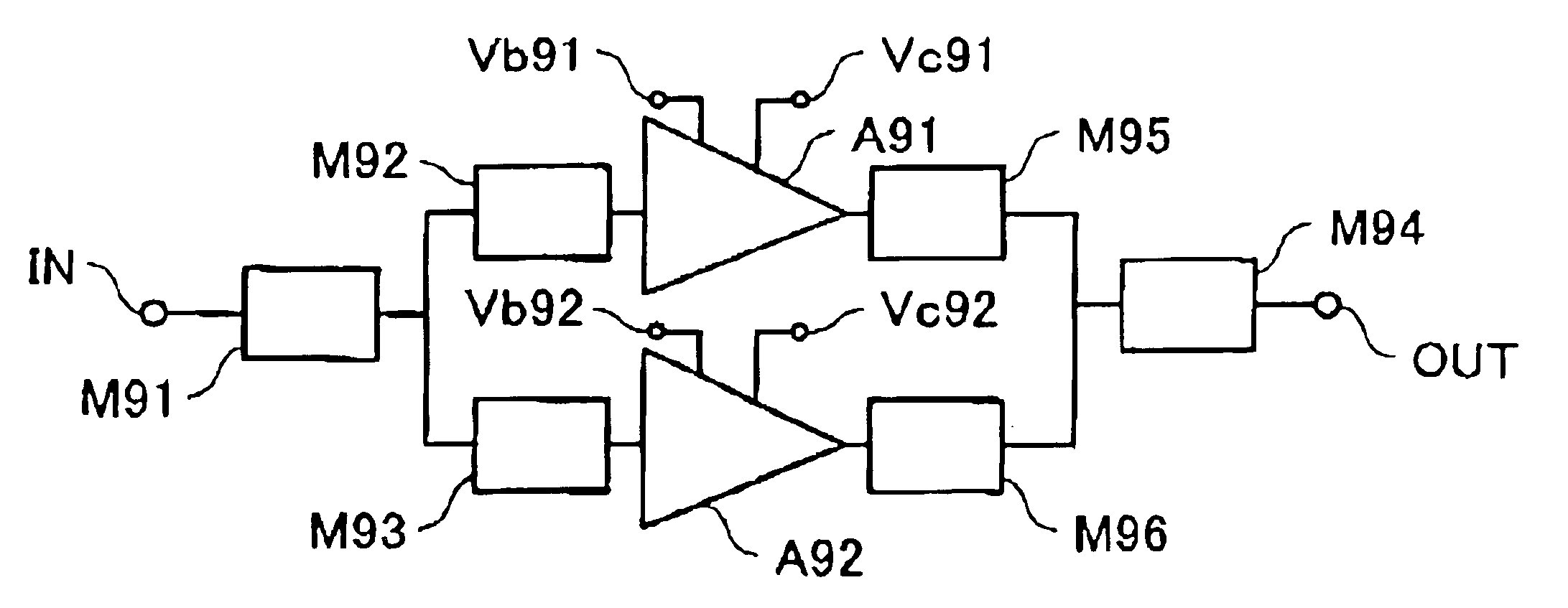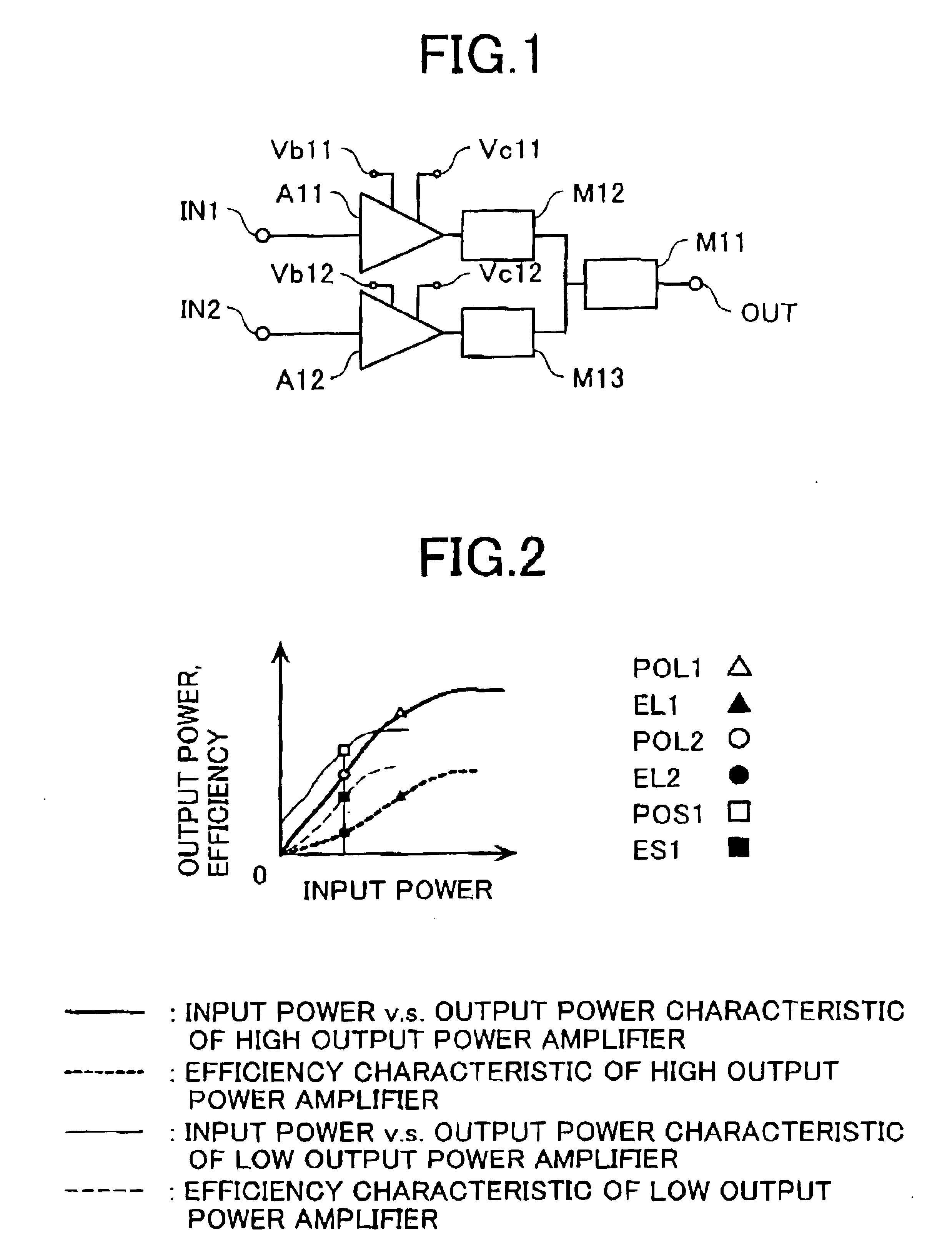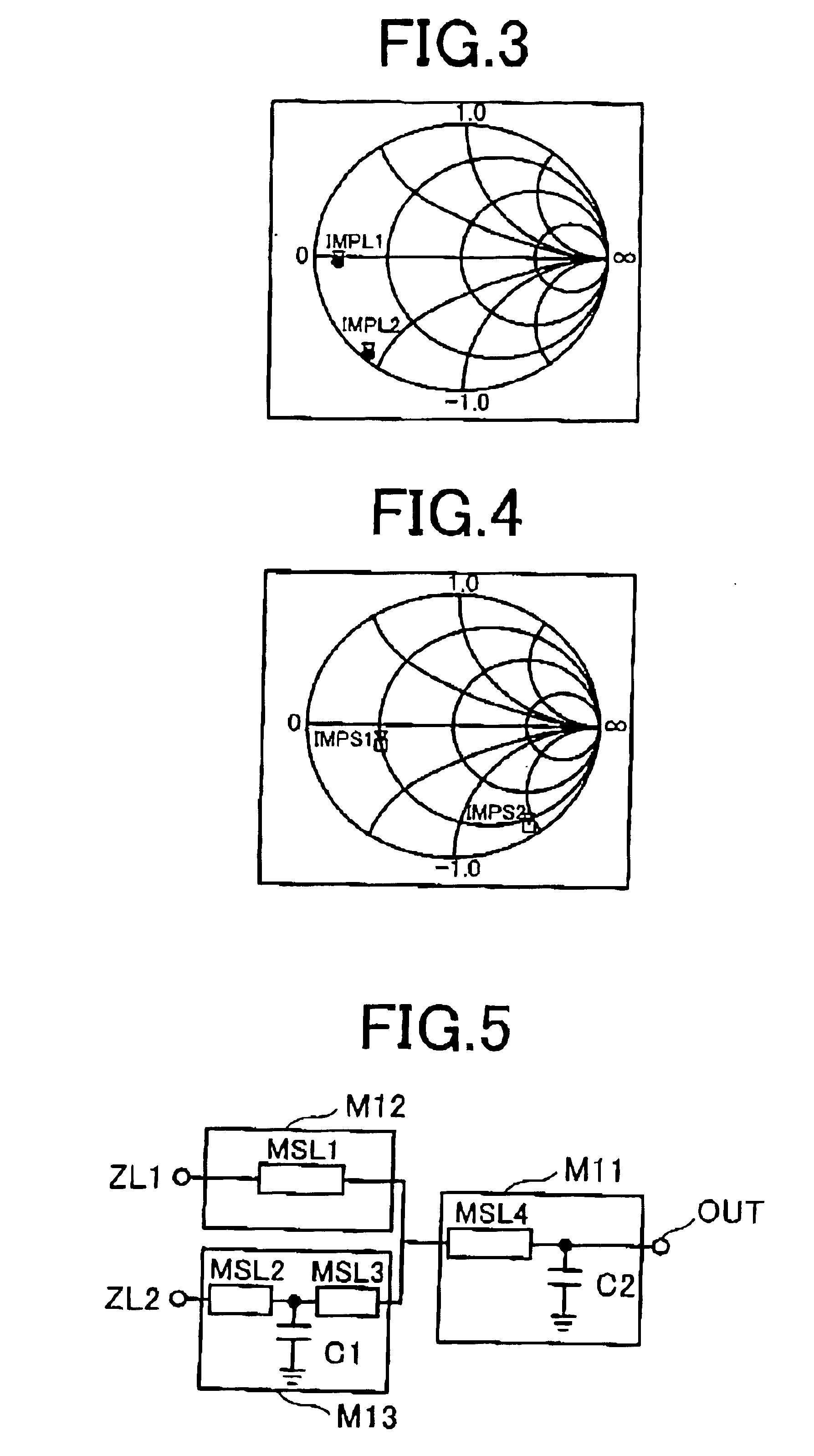Radio frequency power amplifier
a technology of radio frequency power amplifier and efficiency improvement, which is applied in the direction of amplifier combination, high frequency amplifier, gated amplifier, etc., can solve the problems of reducing efficiency, power consumption of switch, and introducing inevitable efficiency loss, etc., and achieves low output power and high output power.
- Summary
- Abstract
- Description
- Claims
- Application Information
AI Technical Summary
Benefits of technology
Problems solved by technology
Method used
Image
Examples
Embodiment Construction
[0029]A detailed description of some preferred embodiments shown in the accompanying drawings embodying the radio frequency power amplifier of the present invention will now be given, in greater details, by referring to the accompanying drawings.
[0030]Now referring to FIG. 1, reference numeral A11 is designated to a high output power amplifier unit, A12 is to a small output power amplifier unit, M12 and M13 are first-stage matching networks connected to the output nodes of power amplifier unit A11 and power amplifier unit A12, respectively, M11 is to a last-stage matching network connected between the junction node of the output nodes of matching networks M12 and M13 and the output terminal OUT. The power amplifier unit A11 and power amplifier unit A12 are both formed of one single amplifier chip. An input signal will be fed to the power amplifier unit A11 via input terminal IN1, and to the power amplifier unit A12 via input terminal IN2. The power amplifier unit A11 incorporates ba...
PUM
 Login to View More
Login to View More Abstract
Description
Claims
Application Information
 Login to View More
Login to View More - R&D
- Intellectual Property
- Life Sciences
- Materials
- Tech Scout
- Unparalleled Data Quality
- Higher Quality Content
- 60% Fewer Hallucinations
Browse by: Latest US Patents, China's latest patents, Technical Efficacy Thesaurus, Application Domain, Technology Topic, Popular Technical Reports.
© 2025 PatSnap. All rights reserved.Legal|Privacy policy|Modern Slavery Act Transparency Statement|Sitemap|About US| Contact US: help@patsnap.com



